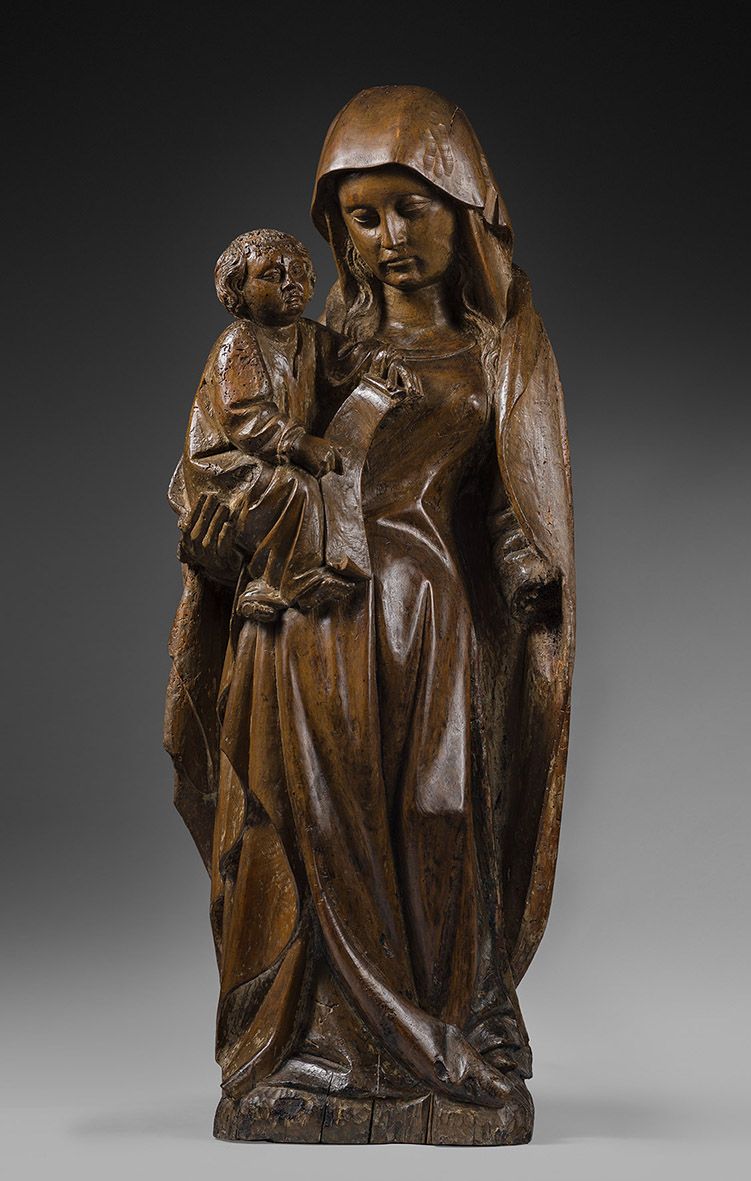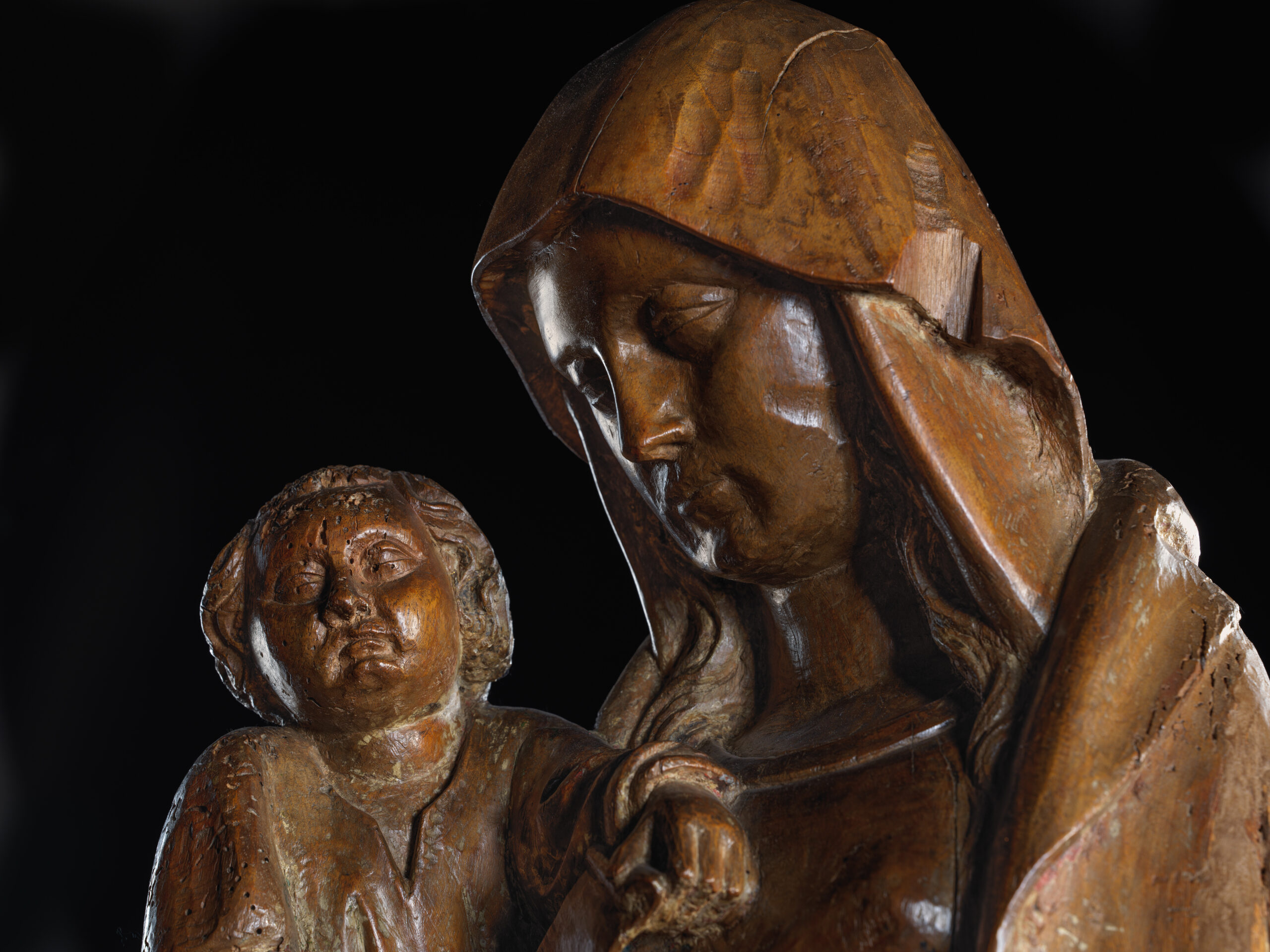Description
This Virgin and Child is wearing clothes with a limited number of folds and showing a thickness characteristic of the Burgundy region. As a result of the presence in the region of the Flemish sculptor Claus Sluter, realizing in Dijon “The Well de Moses” and the decoration of the Chartreuse of Champmol, flourishes a very characteristic art, kept alive by few great artists who have succeed on achieving the tombs of the dukes of Burgundy, Philippe III the Bold and John the Fearless, such Claus de Werve his nephew who died before he found the necessary stones, but realized a large number of works in the region, and also Jean de la Huerta or Antoine le Moiturier.
The Virgin is standing on a squared base. The swaying hips of the Virgin is motivated by the Child carried in her hand on her right hip. She is covered by a large heavy cloth coat, of ancient red polychromy with a folded collar and pulled away from the body by the left arm, leaving visible the blue belt-less dress which marks her slim waist.
The Virgin wears a short veil that covers the front of the face as the mourners of the tomb of Philippe III the Bold in Dijon, but it still leaving the face visible.
Two beautiful long strands of hair with large waves frame her face with regular features and eyes downcast. The expression is soft and melancholic.
The back of the sculpture is carved and marked by some folds, proving it was designed to be autonomous.
The Child Jesus is depicted profile view. He wears a long tunic with long sleeves. He holds a phylactery in his left hand while his right index finger designates a sentence that was supposed to be read on the scroll. It is especially in Burgundy that we find some Virgin and Child where Jesus holds a phylactery without being able to decypher the written text.
Literature
Pierre Camp, Les Imageurs Bourguignons de la fin du Moyen Age, Les Cahiers du Vieux Dijon, 1990.
Jacque Baudouin, La Sculpture Flamboyante, Bourgogne Franche Comté, Créer, 1996
Albert Colombet, Les Madones au phylactère, Bourgogne Morvan, Dijon, Arthaud 1975


